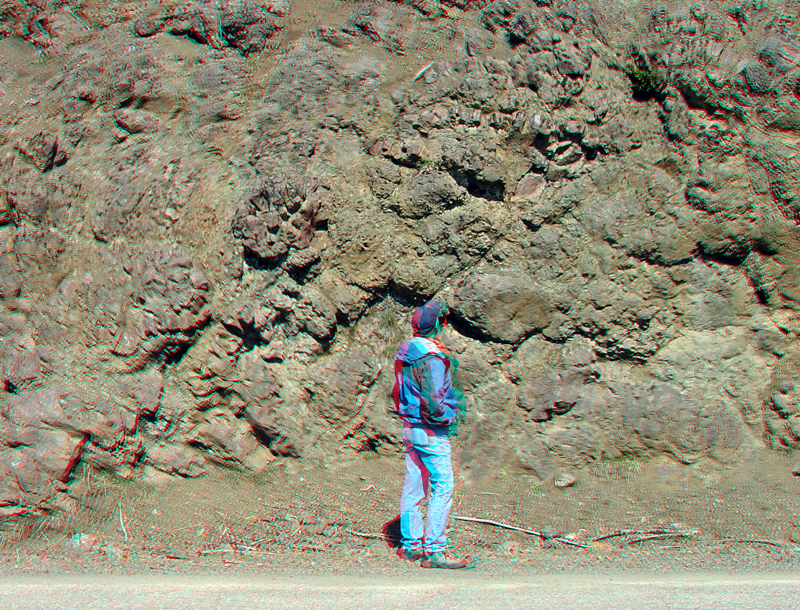| The rocks exposed throughout the Olympic Mountains consist of sedimentary and volcanic materials that accumulated in the ocean basin during the Cenozoic Era (Eocene to Pliocene). The rocks have experience varying degrees of tectonic deformation and metamorphism during the process of being accreted onto the continental margin. On a regional scale the Olympic Mountains comprise a collage of fault-bounded accreted terranes associated with the greater Cascades subduction complex (Rau, 1987; Tabor, 1987b). The rocks in this view are pillow basalt exposed along the Hurricane Ridge Road near
the tunnels area. Basalt "pillows" form when lava cools quickly
on the ocean floor. The lack of bubbles in the lava suggests that the rock
crystallized on the ocean floor under the pressure of deep water (preventing
bubbles from forming in the lava). Lava that cools on land or in shallow
water typically is rich in bubbles formed from the release of gasses as
the lava vents at the surface (NPS, [2010b]). |

